The Berlin of the 1920s had a great influence on Billy Wilder. His films "Menschen am Sonntag", "A Foreign Affair" and "Eins, Zwei, Drei" are closely associated with the city. Two decades ago, the film director died on the 27th day of his death. March 2002 died in Hollywood. In his honor, we look at places in the city where you would have met him.
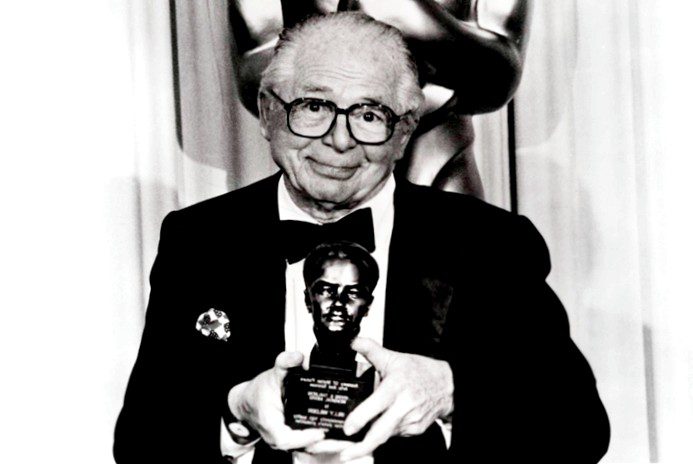
In the cinema, for example: that's when his name first flickered across the screens as a screenwriter: In the 1929 film "Devil's Reporter," which was rediscovered in an archive only a few years ago. "People on Sunday" and "Emil and Detectives" followed. The city was buzzing with creativity. When a different wind blew through the streets with the National Socialists, Wilder had to find a new place to develop his talents. For filmmakers it was Hollywood. But before his first written film scenes were captured on celluloid, he had already put many stories from Berlin's fast-paced city life on paper – newsprint, to be precise – and was already wowing audiences with them.
Born in Sucha, Galicia in 1906, Wilder moved to Vienna during the First World War. There he established himself as a newspaper reporter until his love of Paul Witheman's jazz music opened a path to Berlin for him in 1926.
Furnished room, Pariser Strabe
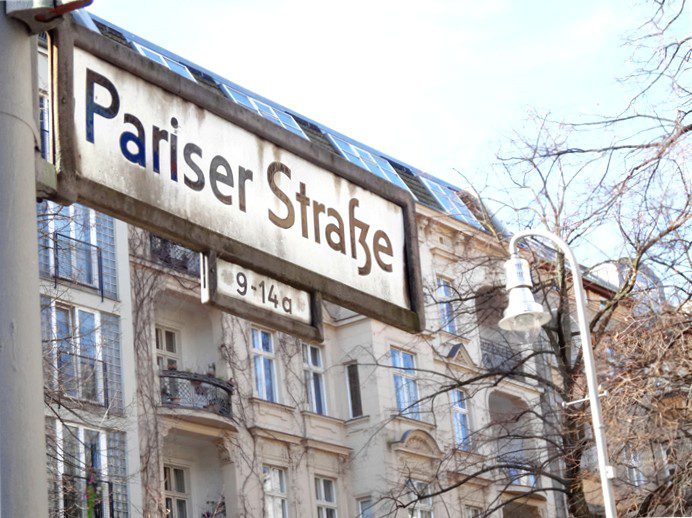
Billy Wilder arrived in Berlin in April 1926. He wasn't 20 years old then, and he was dying to see the Paul Whiteman concert here. He had taken an extra three days of vacation for this. His Viennese newspaper "Die Stunde" had promised to report on the concert. He did and stayed in Berlin, although he did not have a penny in his pocket. Somehow he got by, as a furnished room on Paris Street is listed as his first place to stay in the city. The house number can no longer be found. The street is located near the Kurfurstendamm and was certainly a fine address for the newcomer.
Newspaper "Berliner Nachtausgabe", Zimmerstrasse
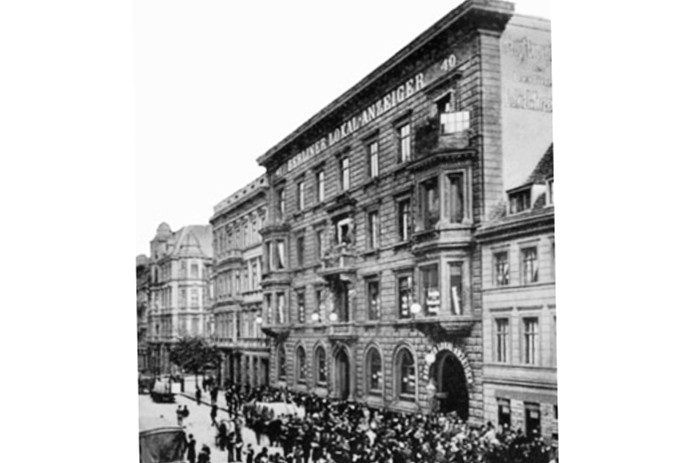
The young reporter was lucky that the Viennese correspondent of the Scherl publishing house gave him a letter of recommendation right away. That helped him get a position at the publishing house at Zimmerstrasse 40/41. He was assigned to the editorial staff of the "Berliner Nachtausgabe". The paper had the addition "illustrated evening newspaper" and was conceived since 1922 as a night edition of the newspaper "Der Tag" and appeared until 1945 as "Berliner illustrierte Nachtausgabe" (Berlin illustrated night edition). The publishing house itself was German-national in orientation.
For Wilder, it was not a glorious time there as court reporter. He was caught sleeping in the office. One can well imagine the fun-loving young man throwing himself into the pulsating life of the city – by day and by night. He tells in fact that he fell in love with a dancer of the Tiller Girls. There is no memory of where he met them. But the English girl troupe performed at the Admiralspalast at that time. However, he was not forgiven for napping in the office and was let go.
Hotel Eden, Budapester Strasse

After losing his job, Wilder made his way through the day. A chance meeting with an acquaintance from Vienna, a dancer, brought salvation. He suggested to Billy Wilder that he work as a dancer in an elegant hotel and sweeten the time for well-heeled ladies of all ages on the dance floor.
The Hotel Eden on Budapest Street. 35 took Wilder into its ranks. The hotel, built in 1912, had more than 200 beds and was the first hotel in Berlin with a roof garden. It was also one of the largest hotels in the city and for a long time the only luxury hotel in the New West. With advertisements it advertised its dancing teas and evening entertainment. Despite the chic ambience and the on-site catering, it was hard-earned money. Billy Wilder's experiences as a "ballroom dancer," as he was officially called, were later reflected in the article "Herr Ober, bitte einen Tanzer," published in the "B.Z. am Mittag". You can read the vivid portrait of those days in the book "The Prince of Wales Goes on Holiday – Berlin Reportages, Features and Reviews of the Twenties". The house itself no longer stands, it was located around today's Olof Palme Square.
"B.Z. am Mittag", Kochstrasse
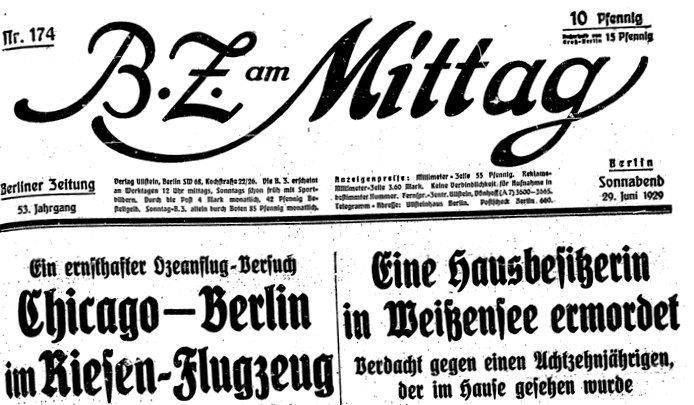
One of the ladies with whom Wilder swung across the dance floor to the beat of the music at the time was a delicate creature. Her husband sat at the table and looked after them. He was of a pale nature. One day he asked Wilder about his work as a dancer. Wilder did not have the heart to pitch him one of his usual stories. It turned out that the interested man was the poet Klabund. He advised Wilder to make a reportage out of his time in the hotel. Together, they tweaked it and gave it to the "B.Z. am Mittag", where it appeared in January 1927. Once again gripped by writing fever, he had already handed in his notice at Eden in mid-December.
Now Wilder hired himself out as a freelance reporter for the "B.Z. am Mittag" and also supplied texts for "Tempo" and "Der Querschnitt". They were all titles published by Ullstein Verlag, which had its headquarters at Kochstrasse 22-26. In Kochstrasse there are still isolated houses from the time, the publishing house has not survived the turbulence of Berlin. At its address now stands a new building of an insurance company.
Cafe Jaedicke, Kochstrabe

When Wilder wasn't crisscrossing the city for his reports, he could be found at Cafe Jaedicke. It was famous for its Baumkuchen and was located in the newspaper district, more precisely at Kochstrabe 58; later Kochstrabe 57, which corresponds to today's Rudi-Dutschke-Strabe. The house number, however, is unclear. While Kochstrasse 60 still bears his name, the building next door can no longer be traced as a cafe. The cafe was popular with journalists and was an unofficial news hub. When Wilder was well, he liked to order two soft eggs or a bockwurst with mustard.
Berliner Borsen Courier, Beuthstrasse

From April to December 1927, Billy Wilder also worked for the "Berliner Borsen Courier," which was only about a 15-minute walk from the Ullstein publishing house, at Beuthstrasse 8. There he worked as night editor and took agency messages as the cause to write short glosses. His creative spirit was not always welcome, and a courtroom report about an egg crate, which he associated with the Jewish Feast of Tabernacles, did not go down well with audiences in the face of growing anti-Semitism. This is how Wilder got kicked out in December 1927. Even today, Beuthstrabe 8 can still be found on the city map, but the walls of the house there are much newer.
Room for sublet, Viktoria-Louise-Platz
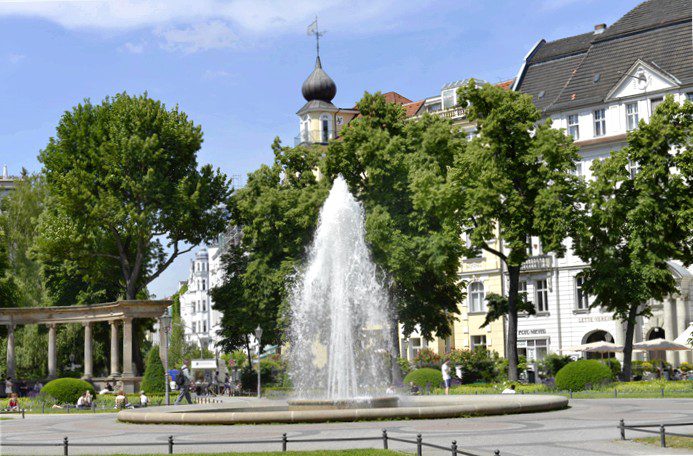
In the meantime, Billy Wilder had also moved and was living at Viktoria-Louise-Platz 11 in bourgeois Schoneberg as a subtenant. He explained once: "Third stick. York-Schulz family. One and a half years. A tiny room with gloomy wallpaper".
He began to translate his love for stories into his first screenplays. But how to get these to the man? One night, fate presented him with a scene worthy of a film. Its room was next to that of the landlords' daughter. She was a fun-loving girl and engaged to be married. But she did not always spend her nights at home with her fiance. One night things got hot in her room and Wilder experienced it as a radio play. Suddenly the doorbell rang and in the next room there was hectic discussion in whispers. The ringing did not let up. A little later the door of the neighboring room opened and then Wilder saw his door open as well. A man with pants and shoes in his hands had to bare them and seek shelter in Wilder's room. An angry, jealous fiance could be heard outside. Wilder was able to find out from his unexpected, nocturnal guest that he was Galitzenstein and was the director of Maxim-Film. Wilder took advantage of the opportunity to get his manuscript into the film industry. In the end, Galitzenstein had bought it for 500 marks, but left it in the room when he disappeared into the night again.
Romanisches Cafe, Breitscheidplatz

Many artists, like Billy Wilder, had only a small place to sleep, so cafes were especially popular. The Romanisches Cafe on Breitscheidplatz became the living room of Berlin's bohemians: writers, journalists, filmmakers, painters, composers, actors, etc. met there to exchange news, land engagements or create art themselves. Of course it was also a good place to make contacts. Wilder was regularly to be found at one of his tables. The idea for the classic film "Menschen am Sonntag" (People on Sunday) was also born there.
A quick flashback: As a roving reporter, Wilder traveled extensively, including movies. He was enthusiastic about the medium and saw his future in film. There he could pursue his passion for fast-paced, pointed stories told through witty dialogues, even if these were still somewhat more limited in the silent films.
Back to the cafe: Wilder's friend Robert Siodmak, also earning his money in the press, enthusiastically told his friends in the cafe that he wanted to make a film, he had surprisingly received 5000 marks from an uncle. His brother Kurt was also there and together they decided to shoot on Sundays, since everyone involved had to work during the week. Between July and December 1929, many Sundays were then spent producing the film.
The Romanisches Cafe, by the way, has survived only in stories and a few photos. In its place, the Europa Center now rises up into the air. More a stomping ground for tourists than for artists. More venues of the Berlin art scene: This is where the bohemians met and continue to meet.
Filming locations: "Menschen am Sonntag"& Co
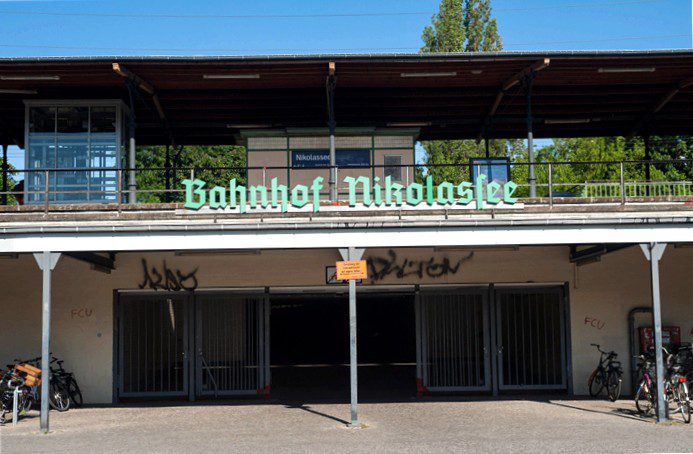
For the silent film "Menschen am Sonntag" (People on Sunday), the young filmmakers met at Nikolassee train station before shooting at Wannsee lake. But there are also inner city scenes like at the Brandenburg Gate, Hausvogteiplatz and the bridge near Gesundbrunnen station. Other addresses include Mehringdamm and Danenstrasse in Prenzlauer Berg.
The premiere was at the Ufa-Theater Kurfurstendamm on the 4th of September. February 1930. The cinema was located at Kurfurstendamm 26, where the Applestore now stands.
In the film palace Wilder could already read his name on the screen for the first time the summer before – as the screenwriter of the film "The Devil's Reporter". In it it goes rapidly through the city; including city tour and a chase on the Avus, in which Wilder is also briefly seen. The premiere was on 17. July 1929, a few days after Wilder and his friends had begun work on their own film "Menschen am Sonntag" (People on Sunday).
The next hit followed in 1931. Wilder worked as a screenwriter with Erich Kastner on the film version of "Emil and the Detectives". This was filmed, for example, at Bahnhof Zoo, at Nikolsburger Platz and at Nollendorfplatz.
Billy Wilder was still involved in many films in Berlin, but in the last one his name was removed from the credits again. Jews were not wanted and the threat of Nazi rule made him take a train to Paris in 1933, Hollywood was the destination. Goodbye, Berlin.
Locations: "An Out-of-Town Affair"
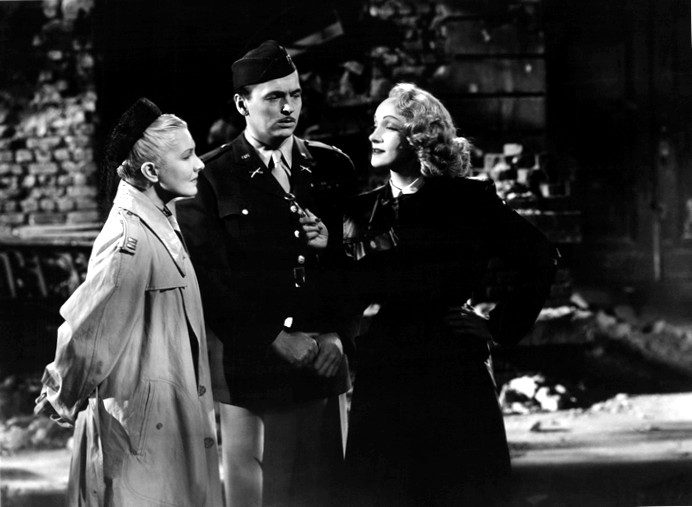
A huge pile of rubble confronted Billy Wilder the next time he saw Berlin. He approached the city from an airplane in the fall of 1945 and asked a cameraman to document the ruins. Wilder was part of the American military at the time. Later he wanted to process the impressions in a film, so the recordings found themselves in 1948 in "A Foreign Affair" ("Eine auswartige Affare") again. The film is set in postwar Berlin, where an American military man has become involved in an affair with a pretty but German nightclub singer. She is played by Marlene Dietrich, who, like Wilder, belonged to the Berlin bohemian scene of the 1920s.
Wilder returned to Berlin in 1947 for the exterior shots of "A Foreign Affair". The Tempelhof airport, the black market on Pariser Platz in front of the Brandenburg Gate and the deforested Tiergarten can be seen. The interior shots were then filmed in the studios of Hollywood.
The film was released in American cinemas in June 1948. It was not good timing for the comedy. In Berlin, the Soviets had just imposed the blockade on the western sectors and the Americans had their hands full supplying the West Berliners with food via the airlift. They did not give in to the pressure of the Soviets. In Germany, "A Foreign Affair" was not seen on television until 1977. Today, the qualities of the film are appreciated – not only as a comedy, but also as a testimony to the times.
Filming locations: "One, Two, Three"

In 1961 Billy Wilder again took the unusual political situation of Berlin as an opportunity to see it from the humorous side. With the stars Liselotte Pulver, Horst Buchholz and James Cagney, he shot the comedy "One, Two, Three". In it, entanglements between American representatives of Coca Cola on the one side and communists in the eastern part of the city on the other side.
For example, he had chosen the Victoria insurance building at Lindenstrasse 22 in Kreuzberg as a filming location, the rooms of which were the offices of the People's Police, as well as the Coca-Cola factory at Hildburghauser Strasse 224 in Lichterfelde, which actually stood there.
Fast car rides through the city sometimes led along Budapester Strabe and Strabe des 17. June along, past the state library Unter den Linden. Of course, the Brandenburg Gate was again the setting, especially since the sector border between East and West Berlin ran through there.
But the landmark also had its pitfalls. Wilder shot the film in the summer of 1961, and when the GDR government on 13.When the American military ordered barbed wires to be put up at the sector border in August, the filming there was over. The Brandenburg Gate was rebuilt in the Bavaria Film Studios in Munich in order to finish the film.
History and Soviet politics threw a wrench in Billy Wilder's plans for this film as well. When the film was released in December 1961, people did not find the film about the city, on the border of which people were now dying, funny at all. From today's perspective, you can have your fun with the crazy story (again).
Zoo Palast, Berlinale and away from the glamor

Billy Wilder wasn't in town again briefly until 1987. In the series of talks "Berlin Lessons" at the Renaissance Theater, he told of his life. Then, in the winter of 1993, the Berlinale brought him here again to award him the Golden Bear. He accepted it in front of the glittering curtain of the Zoo Palast cinema.
He was also honored to be invited to the Red City Hall to sign the city's Golden Book. Equally, of course, this was also an honor for Berlin.
Less pleasant was an outside appointment: In snow and slush, Wilder met with Horst Bucholz at the Brandenburg Gate. Numerous journalists surround it: What memories were there of "One, Two, Three," which they once filmed here on summer shows?
Wilder probably cared more about other memories, those of his father. After the war, he had painfully learned in 1945 that most of his family had perished in concentration camps. Many years later, it turned out that his father was buried in the Jewish cemetery in Weibensee. Wilder visited the grave.
Billy Wilder's own resting place is thousands of miles westward in Los Angeles, in Westwood Village Memorial Park Cemetery. Berlin commemorates the master of film with a Billy Wilder promenade in Lichterfelde.